The Dalles Lock and Dam was one of the largest, most complete, and complex multipurpose projects of its kind in the United States at the time of its construction. It provided an example for future projects benefitting navigation, recreation, water for irrigation and hydropower, fish migration, and flood mitigation. The unusual "L" configuration of the project enabled reduced construction dewatering and created a permanent shallow stilling basin that aids fish passage.
Dams
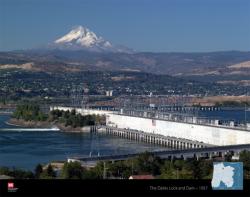
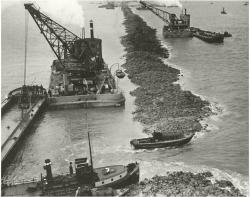
The first Zuiderzee Enclosure Dam ran from North Holland to the island of Wieringen, successfully barring the sea for over 50 years and protecting a large area north of Amsterdam. The total Zuiderzee project was the largest land reclamation effort in the Netherlands, developed over a period of about 80 years, beginning in 1918 and reaching completion in 1996. The huge dyke/dam was considered one of the greatest engineering feats of its time.
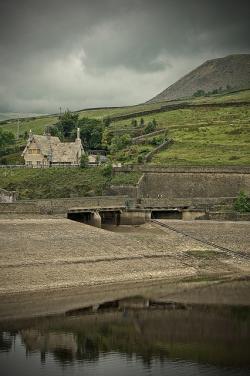
With the discoveries of South Africa's diamonds in the 1860s and gold in the 1880s, immigrants flooded into Cape Town and changed it into a major commercial center. Unfortunately, its water supply had not kept pace with the population growth. After several droughts and years of inadequate water supply, the Woodhead Tunnel was constructed between 1887 and 1891. When it failed to solve the water shortage problem, the Municipality of Cape Town determined that a dam and reservoir needed to be built.
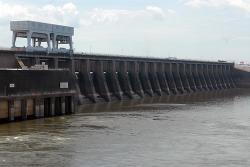
In 1930, the U.S. Corps of Engineers was directed to complete an engineering survey of the Tennessee River to determine the feasibility of establishing complete river navigability. The resulting report recommended a series of nine main river dams and several tributary dams to allow for a minimum eight foot channel (standard for barge navigation) from Knoxville to Paducah.
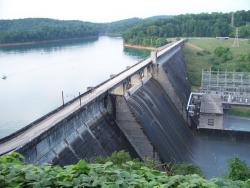
Norris Dam impounds the Clinch River, a mountain tributary of the Tennessee River. The facility stands as a tribute and symbol of the birth of the Tennessee Valley Authority (TVA). Given broad jurisdiction over resource development in the watershed (a 40,000-square-mile basin comprising parts of Virginia, North Carolina, Georgia, Alabama, Mississippi, Kentucky, and Tennessee), the TVA was formed to plan for flood control, improve navigation, and produce hydroelectric power.
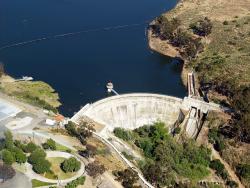
When completed in 1888 to a height of 90 feet, Sweetwater Dam was once the tallest masonry arch dam in the United States, and it led to many others of the same basic design. The original construction began in November 1886 under the direction of Frank E. Brown (civil engineer for Bear Valley Dam) with the rubble-masonry thin-arch design being 50 feet in height. Subsequently, the owner of the water system called upon civil engineer James D. Schuyler to continue and complete the project. Although the field of hydrology was very new and not fully understood at the time, Mr.
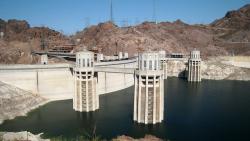
In 1918, the U.S. Reclamation Service's director and chief engineer Arthur P. Davis proposed a dam of unprecedented height to control the devastating floods on the Colorado River, generate hydroelectric power, and store the river's ample waters for irrigation and other uses.
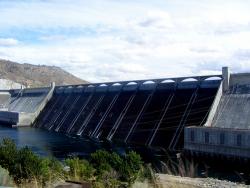
The massive Grand Coulee Dam, on the Columbia River, is the largest concrete structure in the U.S., the largest hydroelectric facility in the U.S., and the sixth-largest hydroelectric facility in the world. It provides irrigation for up to 1.1 million acres of agricultural lands and the hydroelectric complex maintains a generating capacity of 6.8 million kilowatts. It also serves as the primary flood control for the Columbia River basin (with a capacity of 5.18 million acre-feet of water) and provides recreational opportunities on the 150-mile-long Franklin D. Roosevelt Lake.
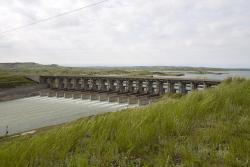
The Fort Peck Dam was a cornerstone project of the Works Progress Administration of Franklin D. Roosevelt's New Deal. It required the largest construction plant and workforce since the construction of the Panama Canal and peaked at 11,000 workers. It was the largest dam of any type in the world for over 30 years.

One of the first major efforts to increase farming and encourage habitation in the arid regions of the western United States, the Rio Grande Project was designed to provide reliable irrigation as well as resolve a dispute over water supply with the Republic of Mexico. The project's centerpiece is Elephant Butte Dam, a concrete gravity structure 301 feet high and 1,674 feet wide. Elephant Butte Reservoir - with a surface area of 36,600 acres and a capacity of more than 2.2 million acre-feet - was the largest reservoir in the world at the time of its completion.
Innovations
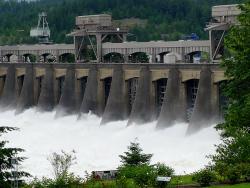
The Bonneville Dam, Columbia River Power and Navigation System consists of 55 major projects on Oregon's Columbia River and is said to be the largest hydroelectric system in the world.
The Columbia River forms part of the border between Washington and Oregon and flows inland through the…
Read More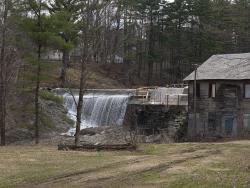
Ithamar A. Beard, an engineer of some prominence in New England, surveyed the mill brook and selected the best site for a storage dam. Contractor Simeon Cobb, knowledgeable of contemporary civil engineering practices, made major changes to the dam's original design, converting the linear dam…
Read More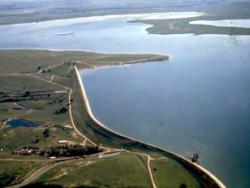
Belle Fourche, meaning "Beautiful Forks" in French, refers to the confluence of the Redwater and Belle Fourche Rivers. The gold rush to the Black Hills in 1876 brought many people to the area, but agriculture and livestock soon became the principal industries. Farmers and civic leaders…
Read More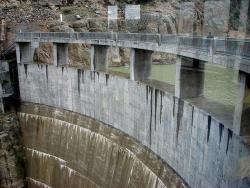
The Buffalo Bill Dam, known as the Shoshone Dam until 1946, was the first mass concrete dam in America. At nearly 325 feet high, it was also the tallest dam in the world at the time of completion.
This was one of the first arch dams in the U.S. to be designed using a mathematical method…
Read More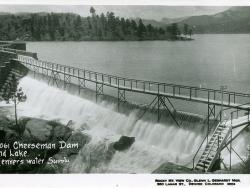
The Cheesman Dam was the first major dam in the U.S. to incorporate the gravity arch, and upon completion it was the highest gravity arch stone masonry dam in the world. It is the key structure in Denver's water supply.
Three years into original construction, flooding swept away the…
Read More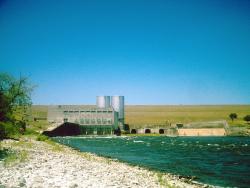
The largest rolled-earth fill dam in the world at the time of its completion, Denison Dam eventually served as a prototype for dam construction in future U.S. Army Corps of Engineers projects throughout the arid plains of the American Southwest. Procedures and equipment developed during…
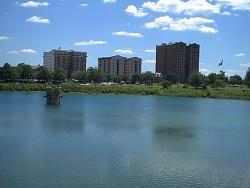
Like other American cities in the late 19th century, Baltimore had grown so quickly its supply system was unable to provide city residents with a dependable supply of water. Two reservoirs built outside the city helped increase capacity, but heavy rainfalls in the largely agricultural area…
Read More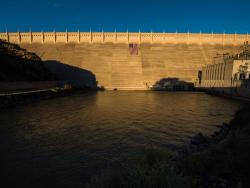
One of the first major efforts to increase farming and encourage habitation in the arid regions of the western United States, the Rio Grande Project was designed to provide reliable irrigation as well as resolve a dispute over water supply with the Republic of Mexico. The project's centerpiece…
Read More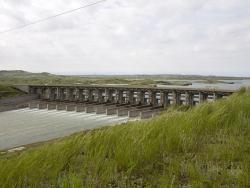
The Fort Peck Dam was a cornerstone project of the Works Progress Administration of Franklin D. Roosevelt's New Deal. It required the largest construction plant and workforce since the construction of the Panama Canal and peaked at 11,000 workers. It was the largest dam of any type in the world…
Read More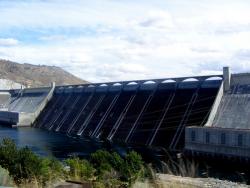
The massive Grand Coulee Dam, on the Columbia River, is the largest concrete structure in the U.S., the largest hydroelectric facility in the U.S., and the sixth-largest hydroelectric facility in the world. It provides irrigation for up to 1.1 million acres of agricultural lands and the…
Read More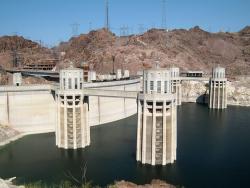
In 1918, the U.S. Reclamation Service's director and chief engineer Arthur P. Davis proposed a dam of unprecedented height to control the devastating floods on the Colorado River, generate hydroelectric power, and store the river's ample waters for irrigation and other uses. A dam project of…
Read More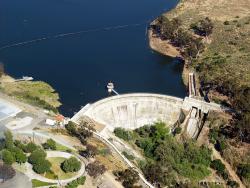
When completed in 1888 to a height of 90 feet, Sweetwater Dam was once the tallest masonry arch dam in the United States, and it led to many others of the same basic design. The original construction began in November 1886 under the direction of Frank E. Brown (civil engineer for Bear Valley Dam…
Read More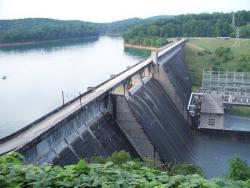
Norris Dam impounds the Clinch River, a mountain tributary of the Tennessee River. The facility stands as a tribute and symbol of the birth of the Tennessee Valley Authority (TVA). Given broad jurisdiction over resource development in the watershed (a 40,000-square-mile basin comprising parts of…
Read More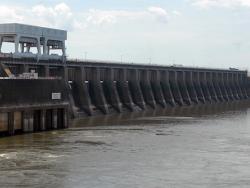
In 1930, the U.S. Corps of Engineers was directed to complete an engineering survey of the Tennessee River to determine the feasibility of establishing complete river navigability. The resulting report recommended a series of nine main river dams and several tributary dams to allow for a minimum…
Read More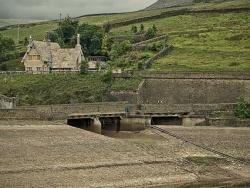
With the discoveries of South Africa's diamonds in the 1860s and gold in the 1880s, immigrants flooded into Cape Town and changed it into a major commercial center. Unfortunately, its water supply had not kept pace with the population growth. After several droughts and years of inadequate water…
Read More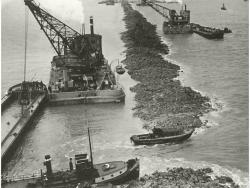
The first Zuiderzee Enclosure Dam ran from North Holland to the island of Wieringen, successfully barring the sea for over 50 years and protecting a large area north of Amsterdam. The total Zuiderzee project was the largest land reclamation effort in the Netherlands, developed over a period of…
Read More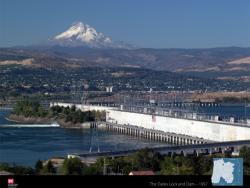
The Dalles Lock and Dam was one of the largest, most complete, and complex multipurpose projects of its kind in the United States at the time of its construction. It provided an example for future projects benefitting navigation, recreation, water for irrigation and hydropower, fish migration,…
Read More

